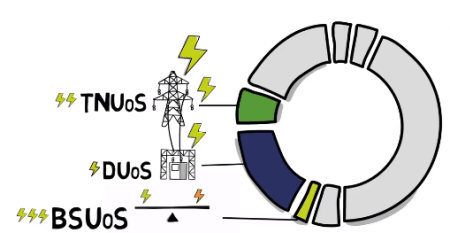
How to cut your Transmission Charge this winter
Extra opportunities to manage costs and meet your budgets
Winter is here. Whether you and your teams welcome the cooler weather or are already counting down the days to spring, one thing’s for sure: it’s also what we call Triad Season and it’s your chance to get control over your Transmission Charges.
So let’s take a look at the Transmission Charge and see how other organisations have responded to turn this season from a cost-maker to a bill-shrinker.
What is a Transmission Charge?
Check out our latest video to find out what it is, where to find it in your bill, and how it works.
Click image to watch video
How to crack it:
Be responsive, be ready to reduce your energy usage
As Sam Taylor, a Senior Account Manager at EDF Energy, mentioned in our latest video, the key to controlling Transmission Charges is to keep informed and be ready to take timely action.
As soon as you know there’s a high chance of a Triad, you need to be ready and able to dial back your consumption as much as possible during that period. The good news is that most organisations have more flexibility in their sites and assets than they might realise.
Why not head over to our Triad Calculator on Market Insight to see what you could save?
See how it’s done:
Make like the Met Office and self-generate
The Met Office managed to trim the equivalent of 5% off their annual bill by empowering their Facilities Managers to switch to using power from onsite generators during the 14 high-risk Triad Alerts over one winter. They successfully hit all three Triad events to cut their Transmission Charge to zero.
Some more bitesized charge-busters to try
Not all sites, companies and organisations have their own onsite generators. So here’s a couple of other ways they’ve managed to reduce their Transmission Charge.
- Flex your consumption: Opt for an automated Demand Side Response (DSR) service. Like one hospital which, having done so, now manages which equipment they can turn off, or turn down, when called on by the Grid in a Triad Alert to reduce their consumption.
- Create energy-savvy habits: Start a behaviour change programme among your colleagues. Share ways they can reduce the electricity they use between 4 and 7pm every evening, when High Triads occur. It’ll help reduce your Distribution charge too!
- Mobilise the troops: Send out an internal notice to the staff that manage your energy-intense processes so they can adjust their schedules and consumption when there’s a high risk of Triad. You could send out an internal email or an intranet message on key Triad days letting them know what time to cut consumption.
How can you stay informed?
Simply sign up to receive our free Triad Alerts at Market Insight.
And that’s it, a few changes for a more responsive approach is all it takes
It’s good to know that you and your team could make some changes to when and how you use energy which could perhaps result in some welcome reductions in your bill.
We hope these bitesized tips, ideas and changes help you do that. And as always, we’re here if you have any questions or need some help.


